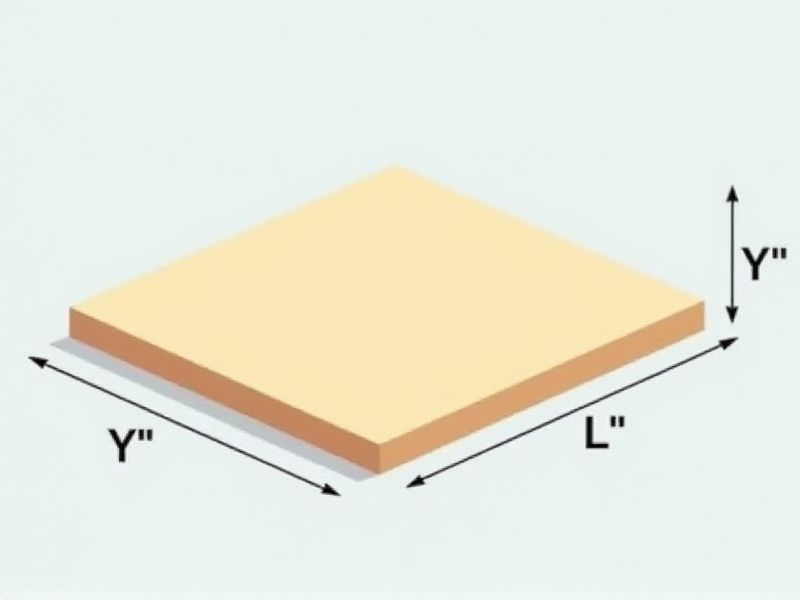
The standard dimensions of a gymnastics floor used in competitions are 12 meters by 12 meters (approximately 39.4 feet by 39.4 feet). This square area provides athletes with enough space to safely perform tumbling passes, jumps, and dance elements. The floor itself is usually sprung, with a layer of foam and plywood underneath to absorb impact and reduce the risk of injury. These dimensions are consistent across international competitions such as the Olympics and are set by the Federation Internationale de Gymnastique (FIG).
Dimensions: 12M X 12M
The standard dimensions for a gymnastics floor exercise area are 12 meters by 12 meters, providing ample space for athletes to perform their routines. This size ensures a safe environment for various acrobatic moves, such as flips and landings. In competitions, these dimensions are vital for scoring, as judges assess the complexity and execution of routines within this specific area. You can enhance your performance by mastering your routine within these precise measurements, maximizing your efficiency and control.
Total Area: 144 Square Meters
The standard size for a gymnastics floor is 144 square meters, providing ample space for athletes to perform various routines and elements. Typically, this area measures 12 meters by 12 meters, allowing for versatile movements and combinations. The surface is designed to be springy, enhancing performance and reducing the risk of injury. Your practice routine can benefit from this spacious and well-structured environment, ensuring optimal execution of skills.
Border Width: 1M
The standard for gymnastics floor routines mandates a border width of 1 meter, which serves as an essential safety zone for athletes. This designated area helps ensure that gymnasts remain within the performance space during routines, promoting both safety and compliance with competition regulations. Maintaining this 1-meter border allows judges to accurately assess performance and execution without distractions from external factors. For athletes aiming for precision and excellence, understanding this boundary is crucial for planning and executing their skills effectively.
Shock-Absorbing
The standard of gymnastics flooring emphasizes shock-absorbing properties, which are crucial for athlete safety and performance. Typically, these floors feature a combination of foam and springs to effectively dissipate impact forces, reducing the risk of injuries such as ankle sprains and fractures. For elite competitions, a thickness of at least 3 centimeters is recommended to ensure proper cushioning. You can enhance your practice environment by investing in a high-quality floor that meets these essential standards.
Non-Slip Surface
The standard for gymnastics floor routines emphasizes a non-slip surface, crucial for safety and performance. Typically, this surface consists of a combination of foam and vinyl, offering both stability and grip underfoot. Gymnasts often perform on 12m x 12m areas, allowing adequate space for complex movements and routines. Ensuring that the flooring maintains its non-slip quality is vital, as it can significantly impact a gymnast's execution and overall scores.
Floor Material: Foam And Carpet
The standard gymnastics floor is typically composed of a combination of foam and carpet, designed to provide optimal shock absorption and traction. Foam padding often ranges from 1 to 2 inches in thickness, allowing gymnasts to perform tumbles and flips with reduced risk of injury. The carpet surface, usually made from high-quality nylon or polypropylene, ensures durability while offering the necessary grip for various routines. You will find that many competitive gymnasiums install floors measuring 40 feet by 40 feet, accommodating a wide range of performances.
Fig Approved Standards
The gymnastics floor routines adhere to the Federation Internationale de Gymnastique (FIG) approved standards, ensuring a uniform level of quality and safety across competitions. The floor area measures 12 meters by 12 meters, providing gymnasts ample space to execute their complex routines that typically include tumbling passes, dance elements, and artistic movements. Judges assess performances on a 10-point scale, weighing factors such as execution, difficulty, and composition, crucial for determining scores. Staying updated with FIG regulations can enhance your performance and understanding of the sport, ensuring you meet all requirements during competitions.
Free Exercise Zone
The gymnastics floor exercise, a critical component of competitive gymnastics, centers around a 12 x 12 meter mat, providing ample space for athletes to showcase their skills. This area is designated as the free exercise zone, enabling gymnasts to perform a series of routines that include tumbling passes, dance elements, and acrobatics. Precision in landings, artistry, and execution are evaluated based on the FIG Code of Points, where scores can range from 0 to 10, impacting overall performance rankings. Your routine must incorporate a balance of difficulty and creativity to excel in this dynamic setting.
Performance Zones Marked
The standards for gymnastics floor routines emphasize specific performance zones that are strategically marked for clarity. Each zone serves as a guide for gymnasts to execute skills and transitions, ensuring they stay within designated areas during their routines. Proper adherence to these zones not only enhances performanceZhi Liang but also factors into scoring, with judges closely monitoring execution within each marked section. You can elevate your routine by effectively utilizing these zones to showcase both technical skill and artistry.
Compliance With Safety Regulations
The standard of gymnastics floor requires strict adherence to safety regulations, ensuring that the surface is designed to minimize injury risks during routines. High-quality foam padding and carpeting, typically measuring 12 to 14 millimeters in thickness, provide essential cushioning for gymnasts performing high-impact moves. Regular inspections of the floor's integrity and maintenance protocols are critical, with recommendations for annual assessments from certified professionals. By prioritizing safety compliance, you significantly enhance both athlete performance and overall training effectiveness.
